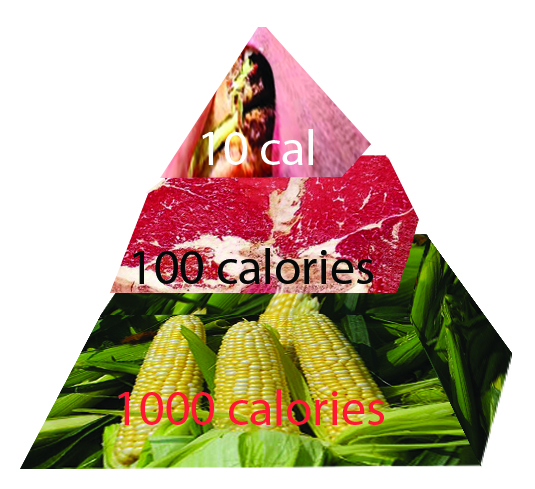How much petroleum is in your food?
There's an incredible amount of petroleum in our food. This is because petroleum is used to create many fertilizers. Since corn requires a lot of nutrition, and allowing fields to lay empty results in a loss of profit, growing corn requires massive amounts of fertilizer. The amount of oil used in the fertilizer for corn is actually greater than the amount of caloric energy we get from the corn.
Food Fact #1
A quarter to a third of a gallon of oil goes into every bushel of corn (56 lbs).
Food Fact #2
It takes about 3 pounds of corn to raise 1 pound of chicken. With the average chicken weighing about 4lbs, there is 2/3 cups of oil per whole chicken.
Food Fact #3
It takes about 10 pounds of corn to make 1 pounds of beef. With an average finishing steer weighing 1400 pounds, there is about 70 gallons of oil per cow, which equals about 1/2 cups of oil per lb of beef. Next time you eat an 8oz steak, think about the 1/4 cup of oil it took to make it.
What does this mean?

The biological rule of 10%, represented in Trophic Levels, tells us that an animal that consumes plants only retains 10% of the plant's energy. In turn, when we eat it, we only retain 10% of the animal's energy. So, when we eat meat, we're using up much more resources than it takes to eat the same calories in corn. Growing corn requires a vast amount of fertilizers when compared to other farming practices. Because grass does not require any fertilizers, grass fed meat products are a great option when considering meat purchases. In general, lowering your intake of meat not only has many health benefits, but also lowers your oil consumption.


